ConvertKit vs ActiveCampaign: Which is The Best Choice for Your Business?

When you buy something through one of the links on our site, we may earn an affiliate commission.
In this article, we're going to be comparing ConvertKit vs ActiveCampaign side-by-side. Choosing the best email marketing software for your business can be tricky, especially when there are so many to choose from. ActiveCampaign and ConvertKit are both great options, but which one is better overall?
As with any decision you make, you need to think about the needs of your business when comparing these two popular email marketing services. You will also want to consider the budget that you have available, particularly if you're just getting started.
ConvertKit is a cult product with content creators and small businesses alike thanks to its ease of use, affordability, and stunning templates perfect for less technical users.
ActiveCampaign, on the other hand, is a full-service marketing automation platform. It includes everything from a CRM to email marketing and even customer support features. It combines data across multiple platforms, allowing you to manage your entire sales and marketing strategy in one place.
Keep reading to hear more about each platform to help you decide whether to go with ConvertKit vs ActiveCampaign.
Try ConvertKit for Free Here Get a Free 14-day Trial of ActiveCampaign HereContents
ConvertKit vs ActiveCampaign: Three Key Differences
In a rush? Here's what you need to know:
- ActiveCampaign focuses on sales and customer experience, tracking the customer journey, and building an effective sales funnel. ConvertKit focuses on using email marketing to drive sales.
- ConvertKit offers a completely free plan for your first 1,000 subscribers. ActiveCampaign doesn't have a free plan, but it does offer a free 14-day trial.
- ActiveCampaign is a CRM as well as a marketing automation platform, making it a great choice for sales-driven businesses. ConvertKit doesn't offer CRM features.
Read on for a deep dive into ConvertKit vs ActiveCampaign and to find out which email marketing service has the features you need for your business.
ConvertKit Review
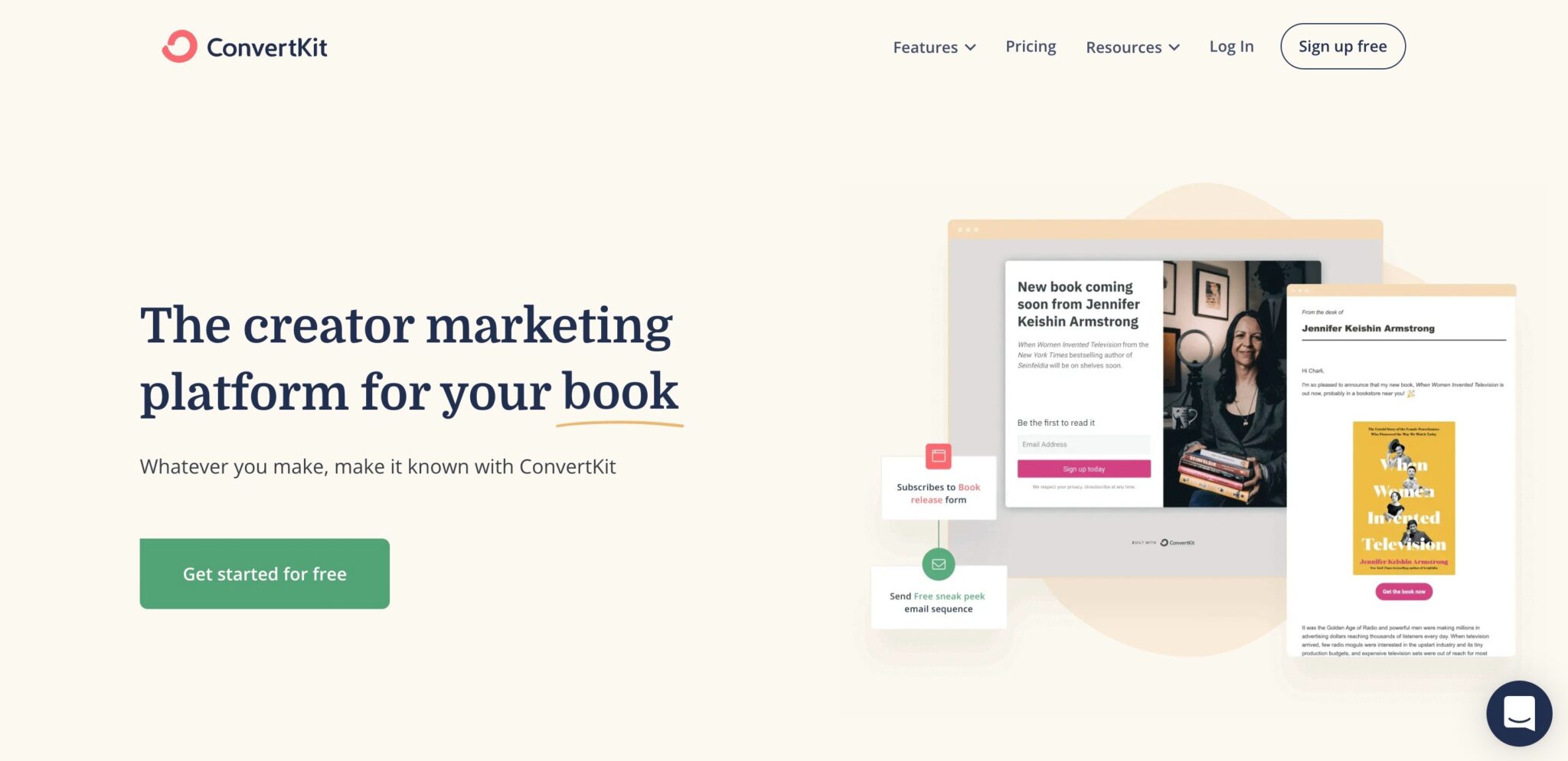
ConvertKit is one of the most popular email marketing platforms on the market. It's known for having powerful features but an easy-to-use dashboard. It's beginner-friendly but offers enough options for more experienced marketers. You don't need to know how to code to be able to use ConvertKit, as you can simply use their drag-and-drop email and page builders. However, if you're more experienced, then the option to code your own templates is also there.
It doesn't matter which website you look at when researching, you'll find glowing reviews of ConvertKit everywhere you look.
This is largely thanks to its usability, great list of features, and a plethora of customization options. The email marketing platform offers on-trend landing page templates and emails that are fully customizable. Alternatively, you can start from scratch and create your own designs.
ConvertKit email marketing service is known for offering excellent customer support with an extensive help forum packed full of guided tutorials. They also offer an exclusive Facebook group and fast email response times.
Packed full of features but still easy to use, this could be a great option for your business if you're just starting out.
Key Features
ConvertKit's key features include:
- Landing page builder
- Email builder
- Send personalized content
- Customizable templates
- Sell digital products
- Automated sales funnel sequences
- Segmentation of target audience using tags
- Integration with more than 70 different plugins
- Repurpose content for different platforms
Email Marketing Tool
ConvertKit makes it easy to design professional-looking emails using the drag-and-drop email builder. There is a large selection of beautifully designed templates to get you started, and each template can be customized to suit your needs.
ConvertKit has worked hard to ensure that the emails you send don't end up in spam, boasting an impressive deliverability score of 98%.

Using ConvertKit, you can send email broadcasts (newsletters, for example), welcome emails, transactional emails, and more. You can also set up email automation to take subscribers through a sales funnel, with various emails being sent depending on the journey your subscriber takes.
This platform also makes it easy to create multiple subscriber lists and allows you to segment them using tags. It enables you to send more personalized emails depending on your email subscribers' demographics or interactions with your website.
Marketing Automation
ConvertKit's marketing automation features enable you to set up multiple email funnels for your subscribers. These are triggered depending on how they have interacted with your emails, website, and landing pages. It also offers automatic lead magnet delivery, enabling you to grow your list and engage with your subscribers on autopilot.
If you offer multiple digital products and courses on various subjects, the advanced automation tools are ideal for tailoring your promotions to the right subscribers.
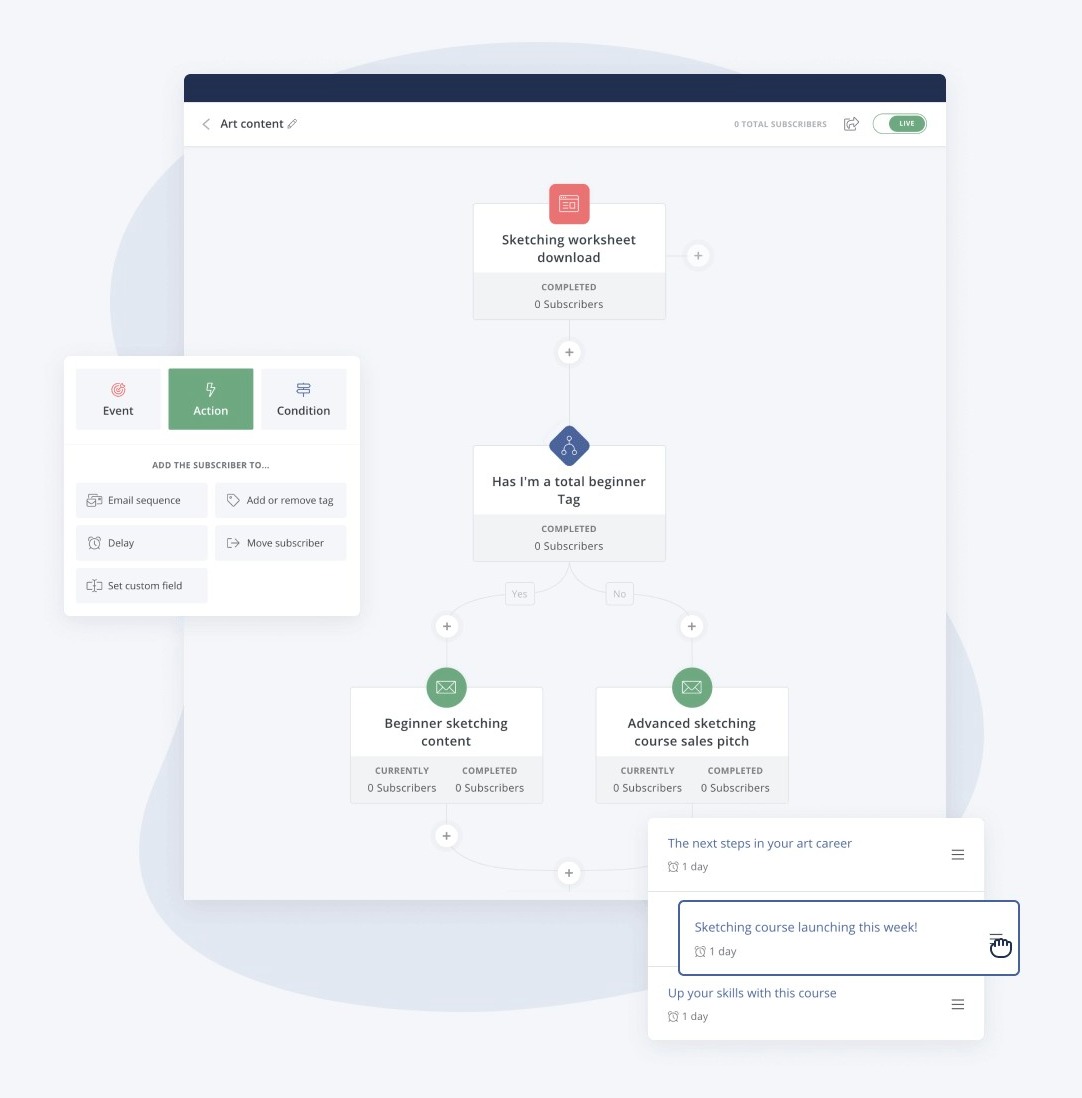
ConvertKit also allows you to segment your email subscribers as part of the marketing automation, depending on certain demographics or actions. You could use this to sort your audience by how they've signed up – which platform or product – or by their age or location to further tailor your communication to their interests.
Signup Forms and Landing Pages
ConvertKit places a strong emphasis on supporting content creators. This focus has seen them put a lot of work into making signup forms (also known as opt in forms) and landing pages as user-friendly as possible, both for the creator and the end-user.
ConvertKit offers a huge selection of templates for both signup forms and landing pages. All sections of the signup forms are customizable, and the landing pages are built using the same drag-and-drop interface as the email creator.
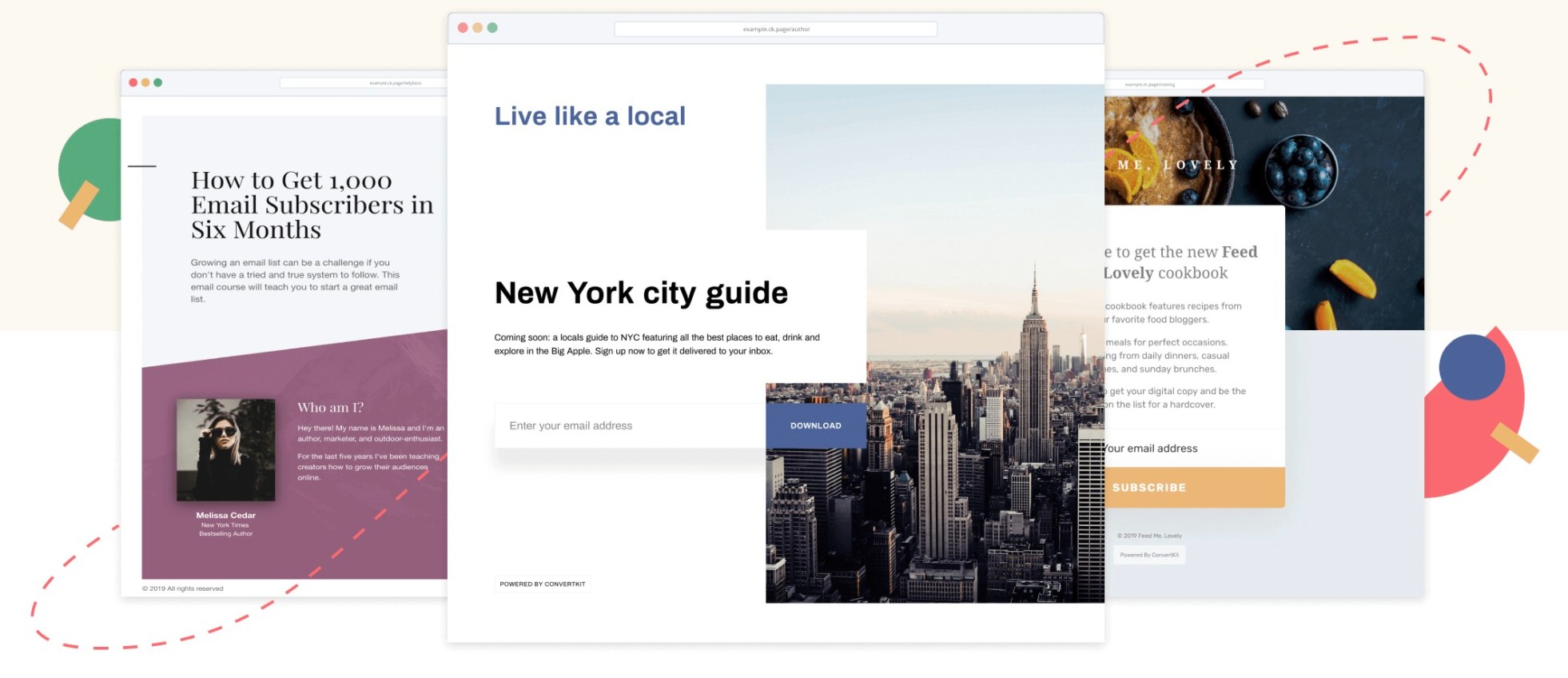
The email templates are rigorously designed and optimized to improve conversions. This is also true of the landing pages and sign-up forms. ConvertKit quotes around a 30% conversion rate, but of course, this depends on your content.
Integrations
ConvertKit offers over 70+ native integrations, including some of the biggest brands like Shopify, Teachable, and Instagram. Integrations are easy to set up and provide a lot of extra functionality, even allowing you to sell digital products through the platform.
Customer Service
Customer service is a real strong point for ConvertKit. They've worked on making it as easy as possible to get in touch with someone when you need it. There is an extensive help section and community on the website with tutorials and basic troubleshooting. However, if that doesn't help, you can contact them via email, and they're usually very quick to reply.
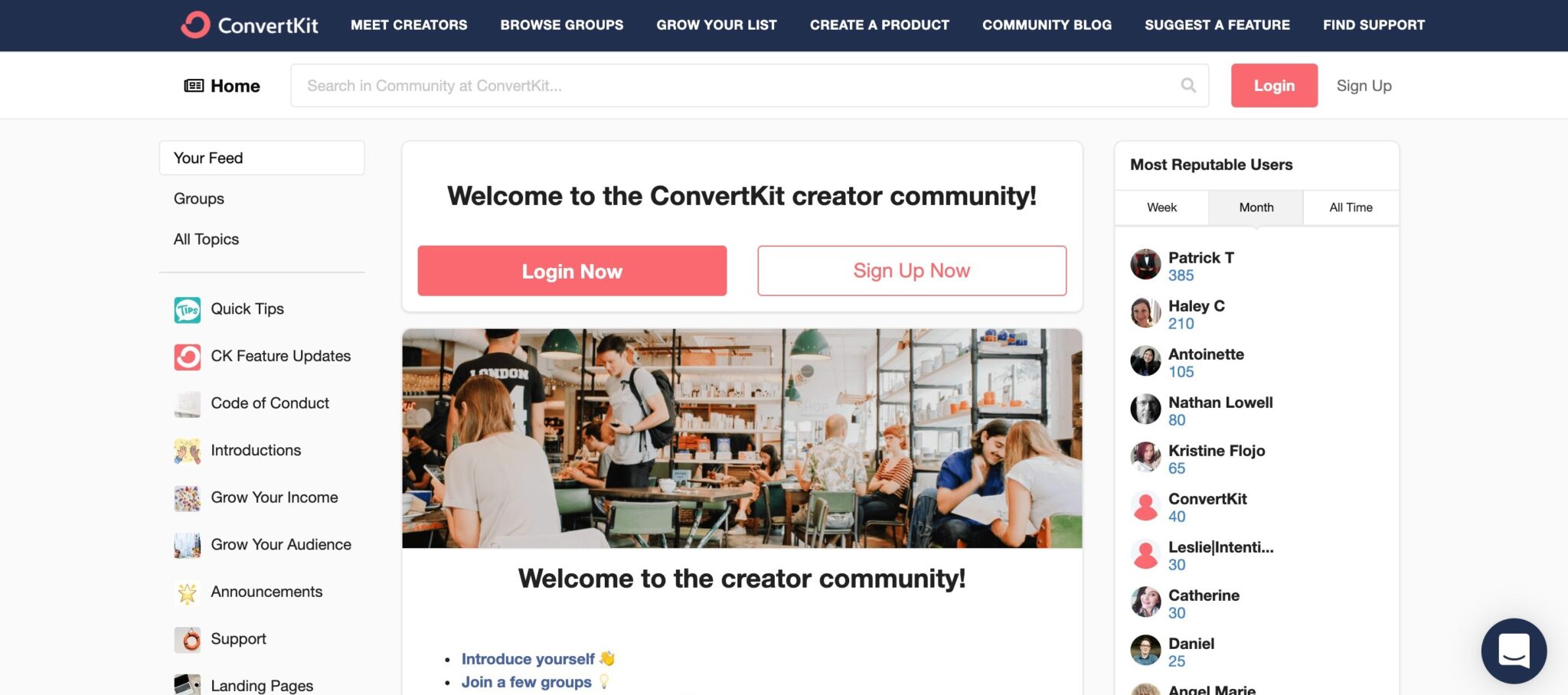
ConvertKit also offers a Facebook group for its users which is moderated by the ConvertKit team. This is a great place to ask any quick questions and get help from more experienced users of the platform as well as ConvertKit themselves.
ConvertKit Pros and Cons
Like all software, ConvertKit has its own pros and cons.
Pros:
- Free plan available
- Perfect for bloggers
- Beautiful templates
- User tagging
- Great deliverability rates
Cons:
- It can get expensive when you have a lot of subscribers
- No A/B testing for headlines in funnel series
ConvertKit Pricing
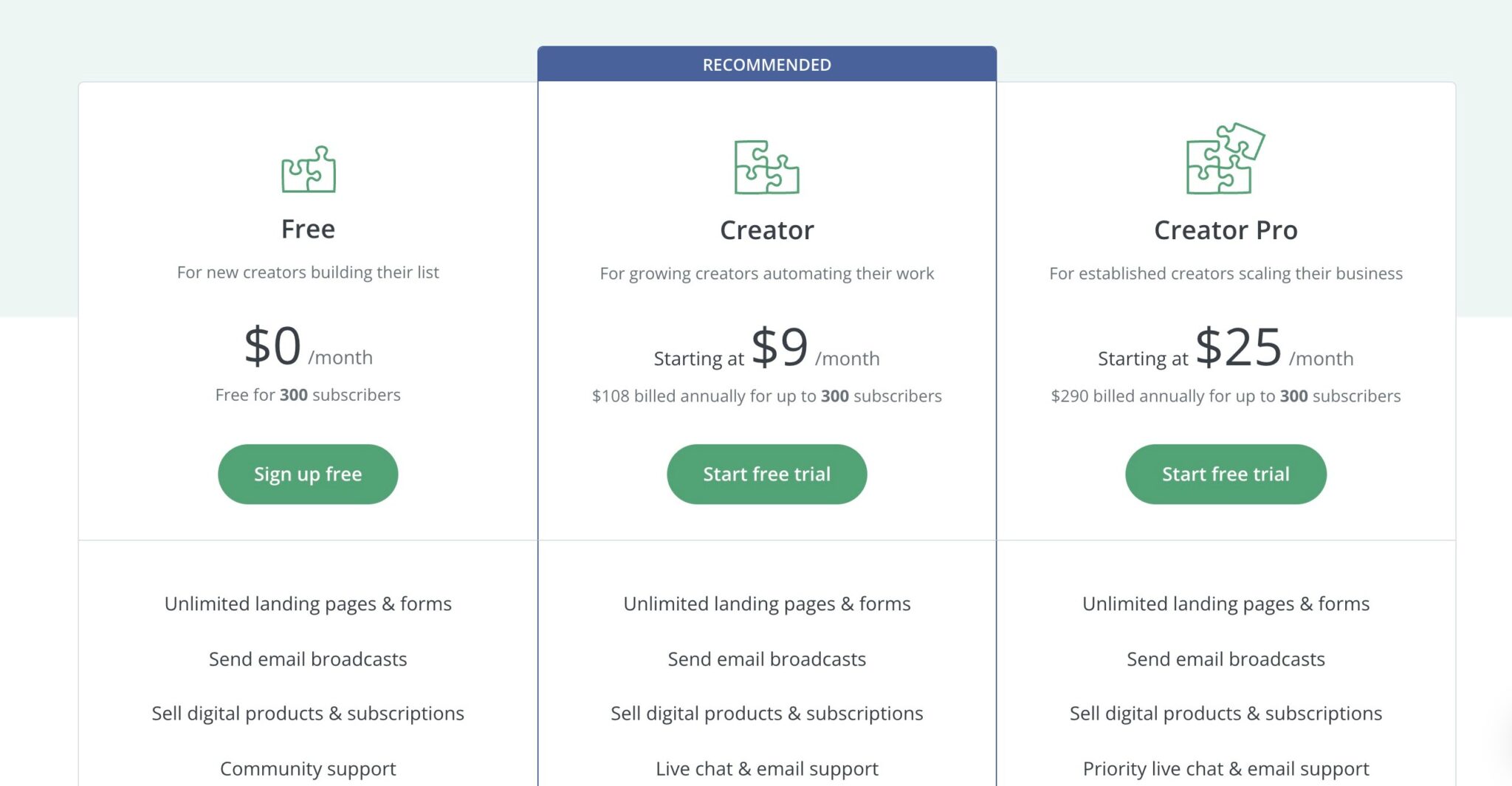
ConvertKit has a flexible pricing system that's based on the size of your email list. The email marketing platform is one of the few companies that offer a free plan.
The free plan gives you access to basic features and allows you to have up to 1,000 subscribers. This plan gives you unlimited landing pages and forms and allows you to sell digital products. This is a very valuable offering to new bloggers who aren't in a position to pay a monthly subscription.
Paid plans are affordable too, starting from just $9/month. This makes it a very affordable option that can grow with your business.
Like the sound of ConvertKit pricing? Get started for free right here.
Try ConvertKit for Free HereCheck out our comparison of ConvertKit vs AWeber in our battle of the email marketing giants.
ActiveCampaign Review
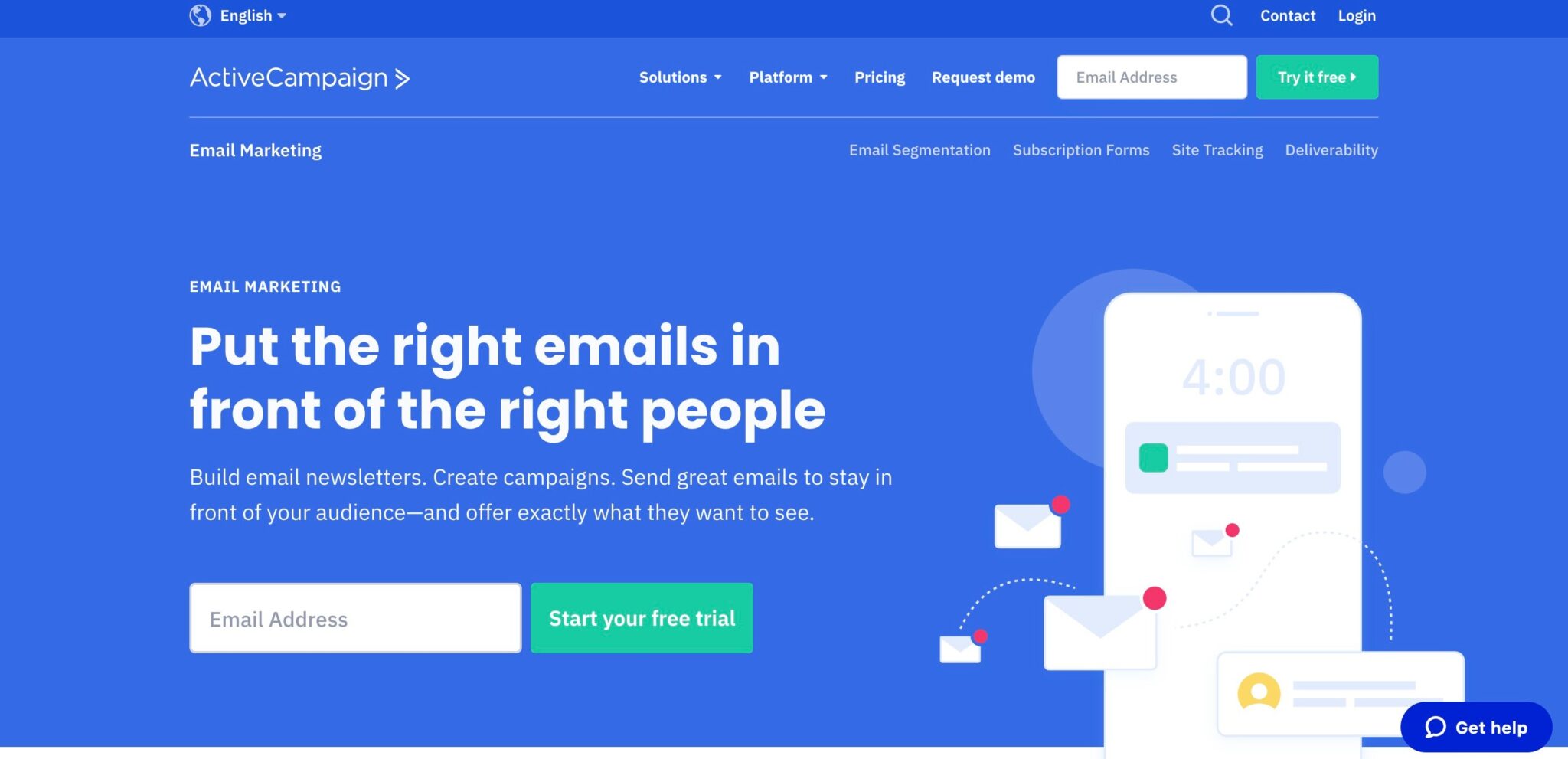
ActiveCampaign is a full-service email marketing automation tool (check out our ActiveCampaign review). They offer landing pages, email marketing, email automation, CRM, and content creation tools.
They focus on creating websites and email lists that drive sales, and as part of this, they have a system that aims to convert warm leads into sales through their mantra of “reach, nurture, convert and grow”. This means that they track how users interact with a website and email list, then use this to deliver targeted messaging that encourages users into a sales funnel.
ActiveCampaign refers to itself as a “customer experience automation platform”, but they aren't too dissimilar from ConvertKit in regards to what they offer.
The major difference is that ActiveCampaign has more of a focus on customer experience, tracking the customer journey, and building an effective sales funnel (but also check out these ActiveCampaign alternatives for more ideas). ConvertKit, on the other hand, focuses on using email marketing to drive sales.
Key Features
ActiveCampaign's key features include:
- Marketing automation
- CRM
- Subscriber tracking – on-site/in-app usage and location
- Drag-and-drop email template builder
- Customizable email content
- Campaign analytics
- Multi-channel marketing
- Plenty of email templates
- Customer service automation
- Lead scoring
Email Marketing
ActiveCampaign promises to create engaging content that converts. They do this is through offering a wide variety of modern and professional email templates as well as some unique tools. You can either customize these templates using the drag-and-drop interface or you can start from scratch.
There are several different “blocks” that you can use to create your email, including a somewhat unique feature called predictive content.
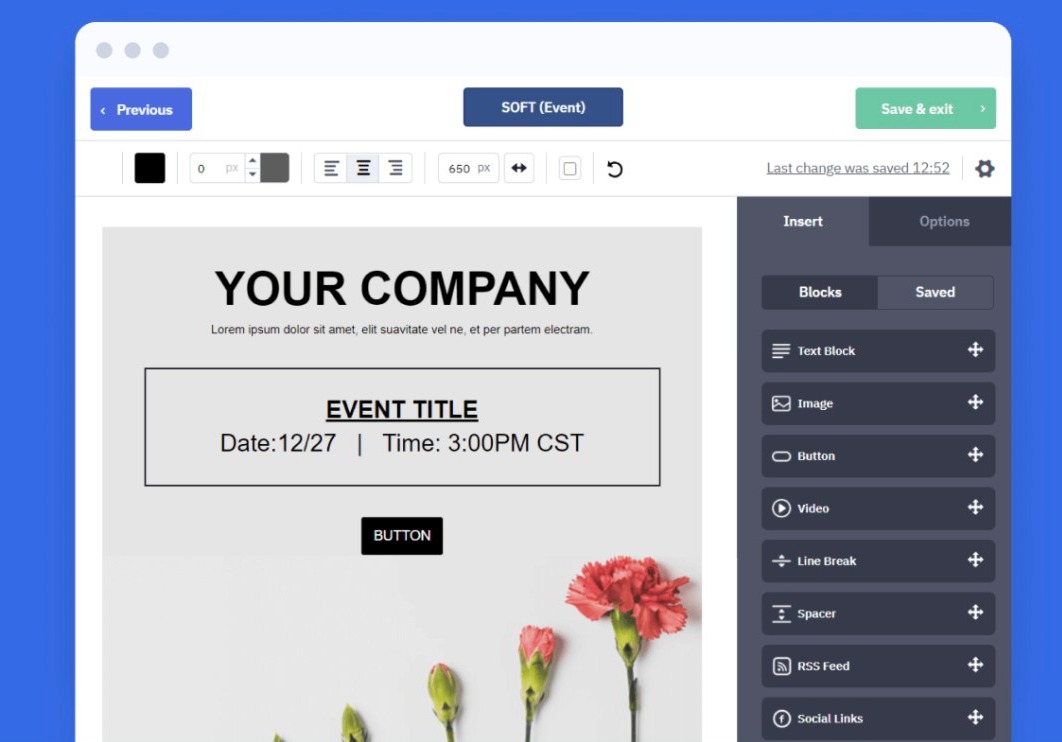
Predictive content is a crossover between marketing automation and manually sending emails. While you create and schedule the email as you normally would, you also provide up to 5 variations on the same text and set parameters such as age, certain interactions with your content, or location.

When you add a predictive content block to your email, ActiveCampaign will analyze the subscriber's history (usage, location, interactions, etc.) and insert a variation on the text that's most likely to engage the individual user to improve conversions.
Marketing Automation
Offering predictive content is only the start of ActiveCampaign's email automation software. Being a full-service marketing platform, the level of automation depends on how fully you use the software (check out our list of the best all-in-one marketing platforms). You have a lot of options, assuming you use the platform to:
- Create landing pages and sign-up forms
- Build automated sales funnels
- Monitor interactions on social media and web platforms
- Send emails
ActiveCampaign allows you to create multiple workflows that change the way the user interacts with your brand depending on previous interactions across multiple platforms. This allows you to tailor your communication to create higher-converting content.
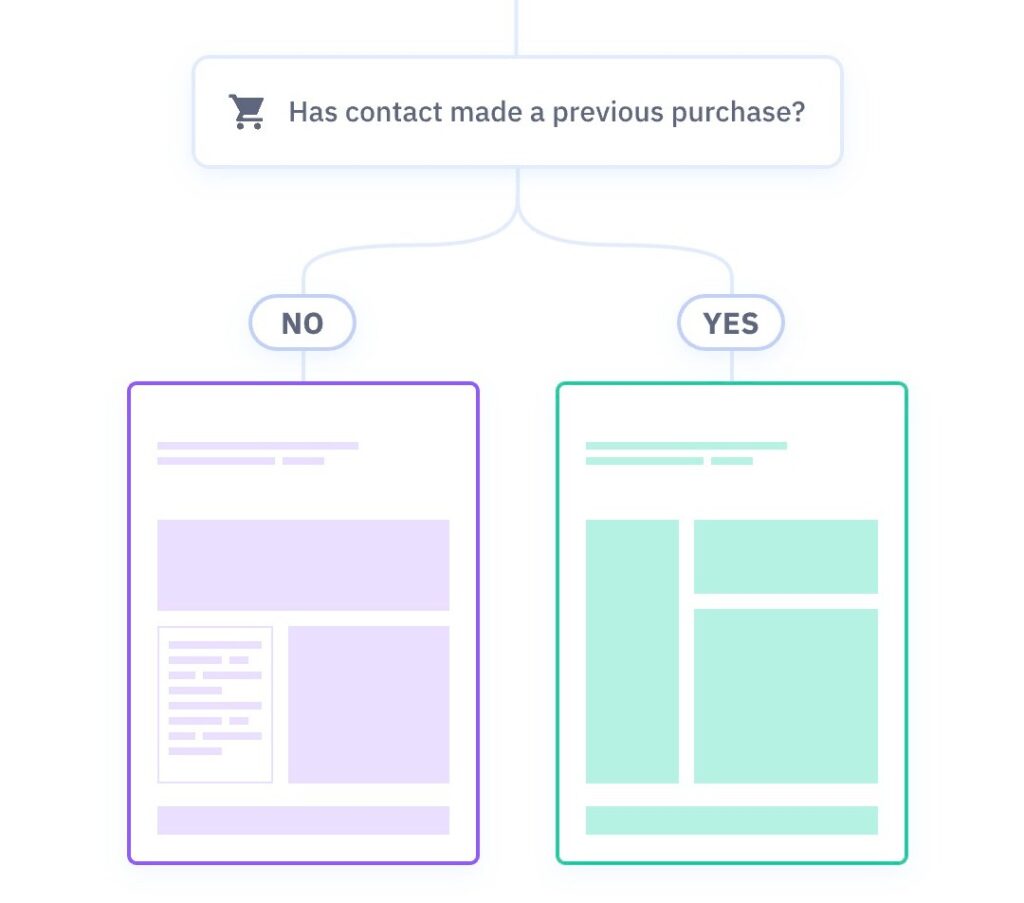
For example, if someone has subscribed to your email list through a social media platform, ActiveCampaign can send an automation sequence to highlight your other platforms. If they bought a certain product or downloaded a freebie, you could recommend other products or offer a discount as a thank you.
Signup Forms and Landing Pages
ActiveCampaign makes it easy to build high-converting landing pages with a combination of their on-trend templates and the easy-to-use drag-and-drop builder. You can customize the templates to be more on-brand or start from scratch to build your own so that it looks like part of your existing website.
There are over 40 templates to choose from, and you're able to have an unlimited number of landing pages. When it comes to ConvertKit vs ActiveCampaign, both offer a wide variety of templates to choose from.
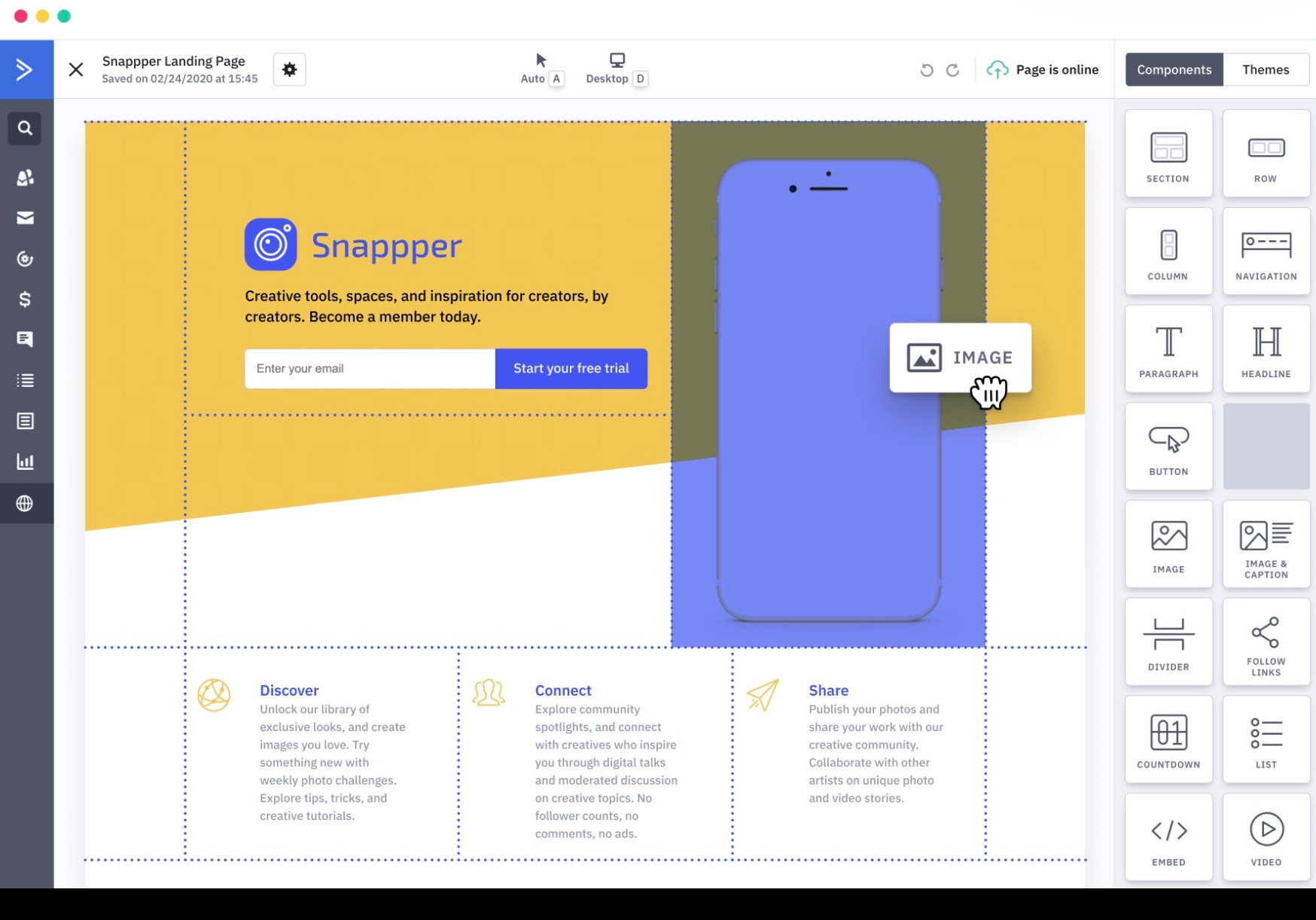
As I mentioned before, ActiveCampaign is perfect for creating sales funnels that get results. You can create special offers that are tailored to your users, so if you offer products, services, or courses, then building a landing page through ActiveCampaign would be a great option for you.
You can create multiple landing pages and even link them together, so you can run several email campaigns and customize the message that your users see depending on what platform or product they've come from.
Integrations
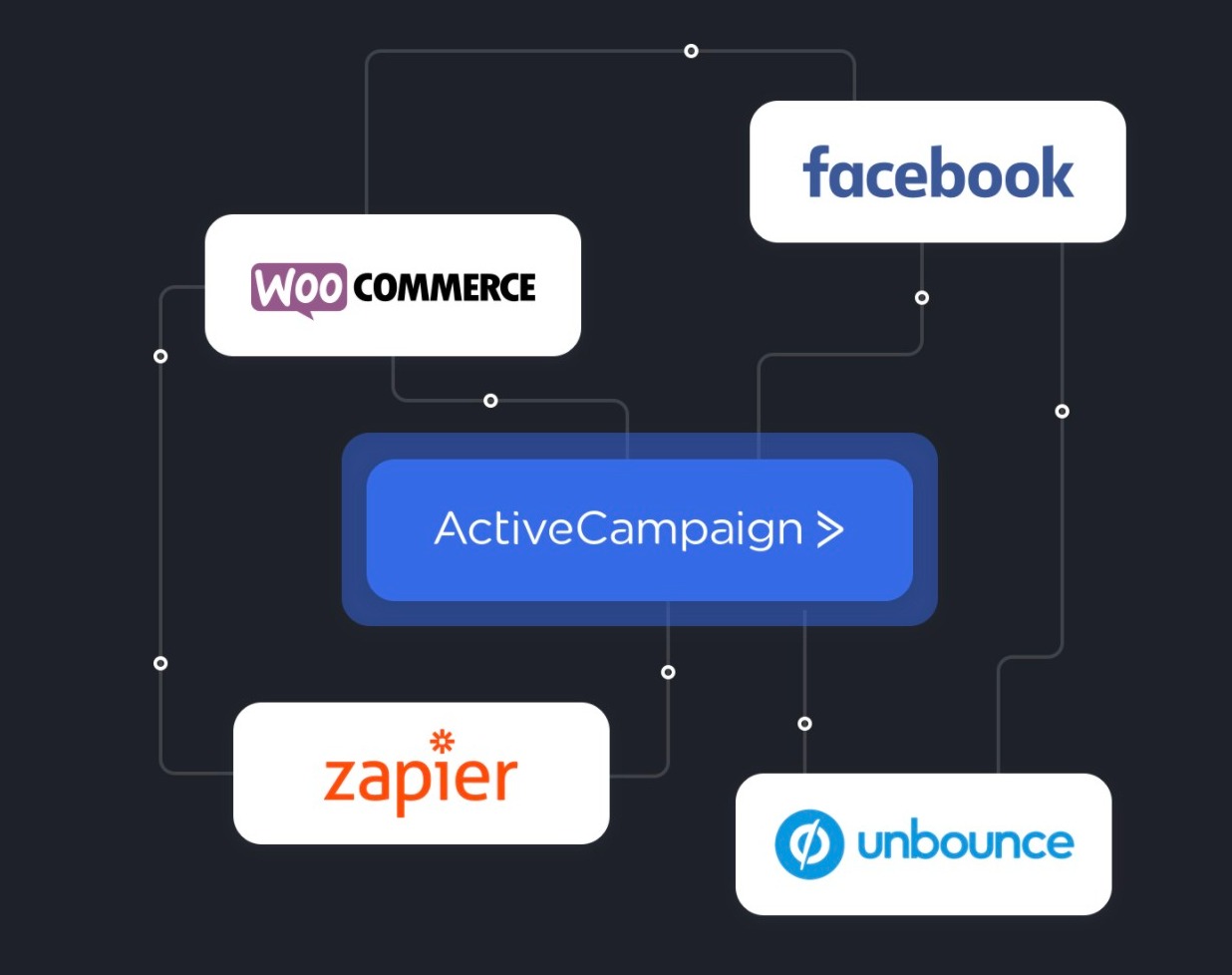
ActiveCampaign has a huge selection of native integrations available within its platform. These include almost all the most widely used platforms, so it shouldn't be difficult to find what you need. Integrations include:
- Google Analytics
- WordPress
- WooCommerce
- Shopify
- PayPal
This allows you to take payment on landing pages or use the platform to create your own store.
While there is a wide variety of built-in integrations, should you need anything else, you're also able to add Zapier. This can further expand your options if you're looking for something very specific. This is a huge pro in a ConvertKit vs ActiveCampaign review.
The platform pushes itself to do everything, so there are even integration options for accounting software, event management, and storage. You can be confident that whatever tool you want to use will integrate well with ActiveCampaign.
Customer Service
ActiveCampaign is known for its excellent customer service, and they offer multiple ways to get in touch.
Lite, Plus, and Professional membership tiers can access support by live chat or email which comes in multiple languages and has long working hours. There is also an extensive knowledge base on the website with tutorials and walk-throughs. Enterprise members also have access to phone support.
The help section is actually highly rated as a standalone product. In fact, many bloggers recommend that you take advantage of their free tools that you can access without signing up.
ActiveCampaign Pros and Cons
As with everything, ActiveCampaign has its own pros and cons. It's important to think about each of these to see if there are any dealbreakers.
Pros:
- In-built CRM
- Highly targeted marketing
- Easy to use
- Affordable
- Machine Learning
- A/B testing
Cons:
- No free plan
- The reporting features can be tricky to navigate
ActiveCampaign Pricing
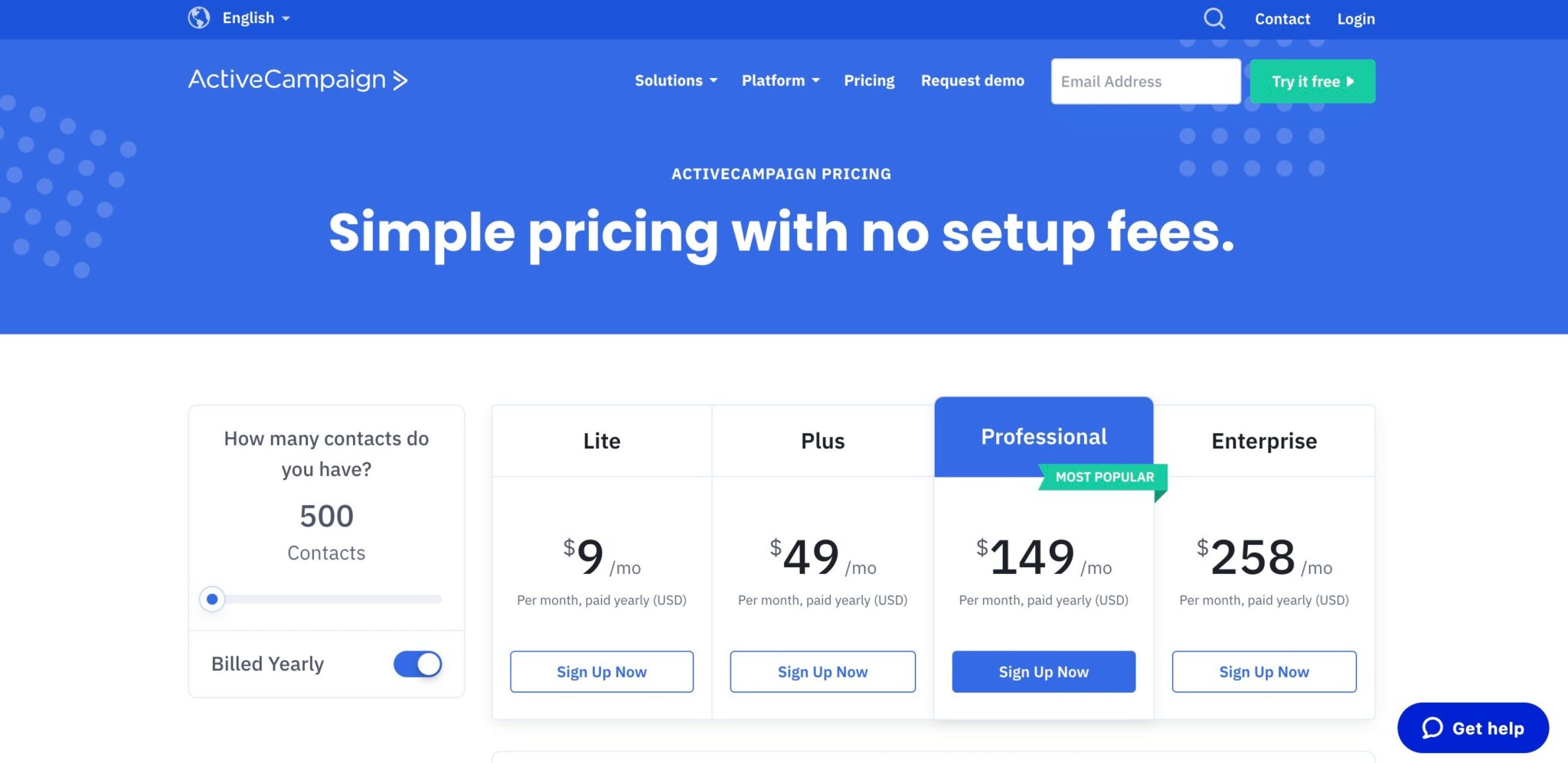
ActiveCampaign currently doesn't offer a free plan, but they offer a 14-day free trial. This means you can get a good feel for the platform before committing to a paid plan.
After the free trial, pricing starts at $9 per month for the Lite tier (billed annually). This gives you access to most of the tools that any small business or creator would need, including marketing automation and detailed analytics.
The only major frustration is that the Lite pricing tier doesn't include landing pages. This is something that is included on the lowest tier as standard on almost every other email marketing platform.
If you're a more confident user, there is a way around this by creating a landing page in WordPress and then tracking analytics through the WordPress integration. However, it is frustrating and could be a deal-breaker for newer users.
More specific tools, aimed at larger organizations, are available on the higher plans which start at $49 per month. This higher price gives you access to more specific segmentation tools for users and data, more automation, and landing pages among other things.
Each membership tier has a list of what you get access to on the pricing page of their website. Reading this will allow you to compare what's best for your business before signing up.
Like the sound of ActiveCampaign? Take advantage of the free 14-day trial to see how it works.
Get a Free 14-day Trial of ActiveCampaign HereCheck out our GetResponse Vs ActiveCampaign comparison here.
ConvertKit vs ActiveCampaign: Which is Better Overall?
When it comes to choosing between ConvertKit vs ActiveCampaign, which is the better option between these two marketing automation tools? As always, with comparing different tools, what's best suited for you will depend on your needs as a business and your budget.
For bloggers who only need email marketing, lead magnet delivery, and landing pages, then ConvertKit is the best option. It has plenty of customizable templates, is easy to use, and is very flexible.
Check out our comparison article on ConvertKit vs Constant Contact to see how it stacks up against another competitor.
Having a free option is a huge bonus for small businesses and start-ups because it allows you to keep your costs down at the beginning. The free plan is actually very generous and provides access to most of the tools that you would get from a paid plan.
If you have a small monthly budget and want something that will do it all, then ActiveCampaign wins hands down. They aim to deliver a full-service sales CRM and marketing platform, and they really do. The ability to have all of the platforms working together to create a sales funnel means that communication is personalized and optimized depending on the user's interactions.
ActiveCampaign brings top-tier technology that large organizations use into a price bracket that makes it affordable for start-ups and can hugely accelerate growth and revenue.
It's a fantastic option for coaches, business owners, and service providers who rely on sales and customer experience as a key part of their business growth.
Try ConvertKit for Free Here Get a Free 14-day Trial of ActiveCampaign HereWant to learn step-by-step how I built my Niche Site Empire up to a full-time income?
Yes! I Love to Learn
Learn How I Built My Niche Site Empire to a Full-time Income
- How to Pick the Right Keywords at the START, and avoid the losers
- How to Scale and Outsource 90% of the Work, Allowing Your Empire to GROW Without You
- How to Build a Site That Gets REAL TRAFFIC FROM GOOGLE (every. single. day.)
- Subscribe to the Niche Pursuits Newsletter delivered with value 3X per week
My top recommendations

















